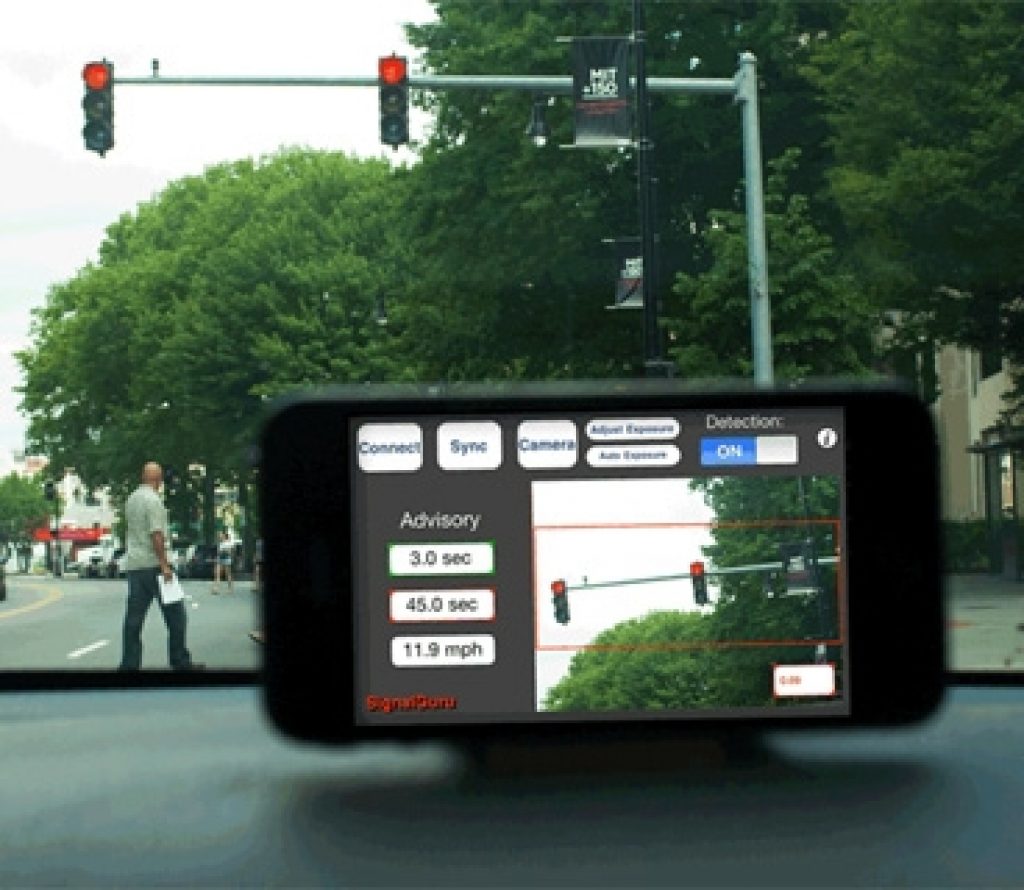In my 14+ years as a technology analyst and journalist, I'm not sure that I've ever referenced MIT News before, far from twice within two weeks. Yet an innovation reported in the online journal late last month justifies the repeat attention. As those of you who own one already know, smartphones (along with an increasing percentage of lower-priced feature phones) include a back-side image sensor-plus-lens assembly for still and video photography purposes. Some of them also include front-side camera subsystems…but they're not the focus here.
An increasing number of cellphones also embed GPS receivers for use by various location-based services, and of course they provide cellular network connectivity. Put the three (camera, GPS, and cellular data) together, mount the phone in a dashboard-located bracket (commonly already in use for phone-as-GPS-unit purposes), and you have everything needed to implement the SignalGuru system (PDF), co-developed by researchers at MIT and Princeton, which won the best-paper award at July's Association for Computing Machinery MobiSys conference.
As your vehicle traverses a traffic light, SignalGuru regularly logs its green-versus-yellow-versus-red status, logging the data to a centralized database. Other drivers, upon subsequently approaching that same intersection, are informed by SignalGuru if they should slow down in order to avoid time- and mileage-inefficient stops-and-starts. Amusingly, the article also notes:
In addition to designing an application that instructs drivers when to slow down, the researchers also modeled the effect of instructing them to speed up to catch lights. But "we think that this application is not a safe thing to have," Koukoumidis [editor note: Emmanouil Koukoumidis, a visiting researcher at MIT who led the project] says.
The preliminary test results are impressive, particularly considering Koukoumids' claims that "cars are responsible for 28 percent of the energy consumption and 32 percent of the carbon dioxide emissions in the United States":
In tests conducted in Cambridge, Mass., it helped drivers cut fuel consumption by 20 percent… In addition to testing SignalGuru in Cambridge, where traffic lights are on fixed schedules, the researchers also tested it in Singapore, where the duration of lights varies continuously according to fluctuations in traffic flow. In Cambridge, the system was able to predict when lights would change with an error of only two-thirds of a second. In suburban Singapore, the error increased to slightly more than a second, and at one particular light in densely populated central Singapore, it went up to more than two seconds. “The good news for the U.S.,” Koukoumidis says, “is that most signals in the U.S. are dummy signals” — signals with fixed schedules. But even an accuracy of two and half seconds, Koukoumidis says, “could very well help you avoid stopping at an intersection.” Moreover, he points out, the predictions for variable signals would improve as more cars were outfitted with the system, collecting more data.
And the cameras' captured images, correlated to GPS data, could potentially find use for more than just monitoring traffic lights' statuses:
The computing infrastructure that underlies the system could be adapted to a wide range of applications: The camera could, for instance, capture information about prices at different gas stations, about the locations and rates of progress of city buses, or about the availability of parking spaces in urban areas, all of which could be useful to commuters… Koukoumidis envisions that the system could also be used in conjunction with existing routing software. Rather than recommending, for instance, that a car slow to a crawl to avoid a red light, it might suggest ducking down a side street.
The project's conclusions are sobering and spot-on but still encouraging, at least in the long-term:
One obstacle to commercial deployment of the system, Gruteser [editor note: Marco Gruteser, an associate professor of electrical and computer engineering in the Wireless information Network Laboratory at Rutgers University] says, could be “finding a way to get the participation numbers required for this type of crowd-sourcing solution. There’s a lot of people who have to use the system to provide fresh sensing data.” Additional traffic-related applications, of the type that Koukoumidis is investigating, could be one way to drive participation, Gruteser says, but they won’t emerge overnight. “The processing algorithms would be a little more complex,” Gruteser says.
SignalGuru garnered abundant blogosphere attention (at least at the sites that I regularly monitor). For more perspectives, check out the following links:
· Engadget
· GigaOM
· Slashdot
· Slashgear, and


